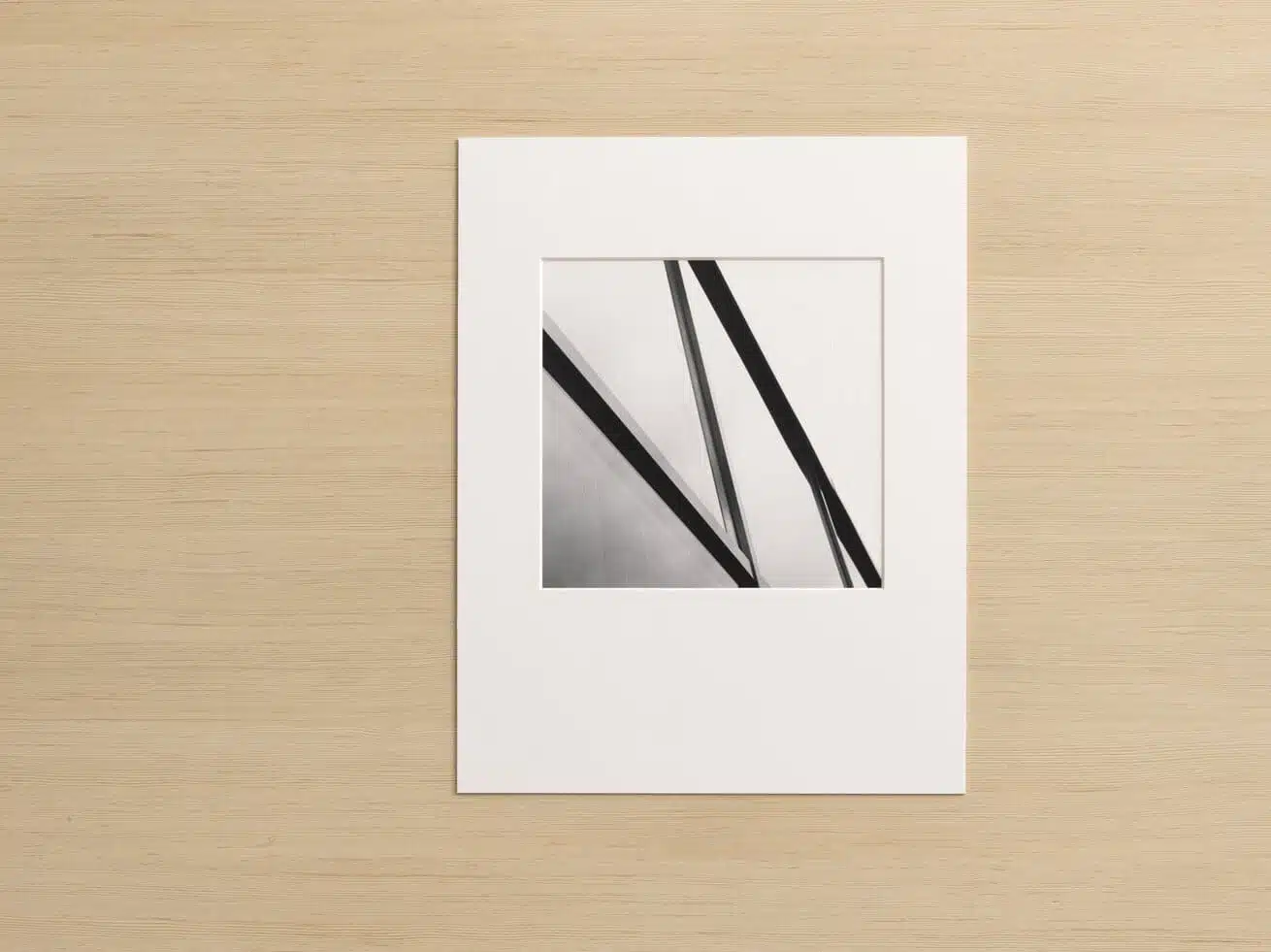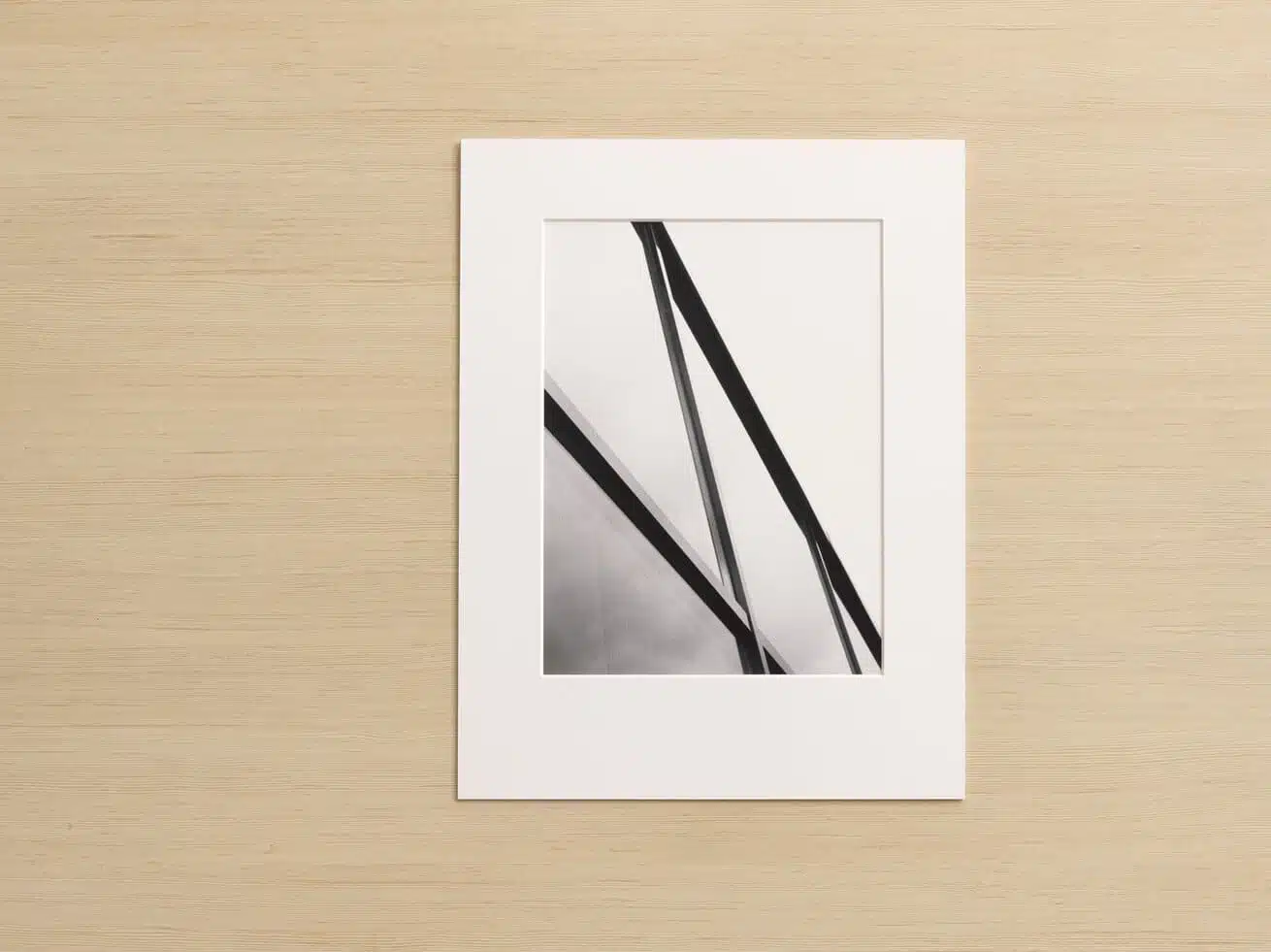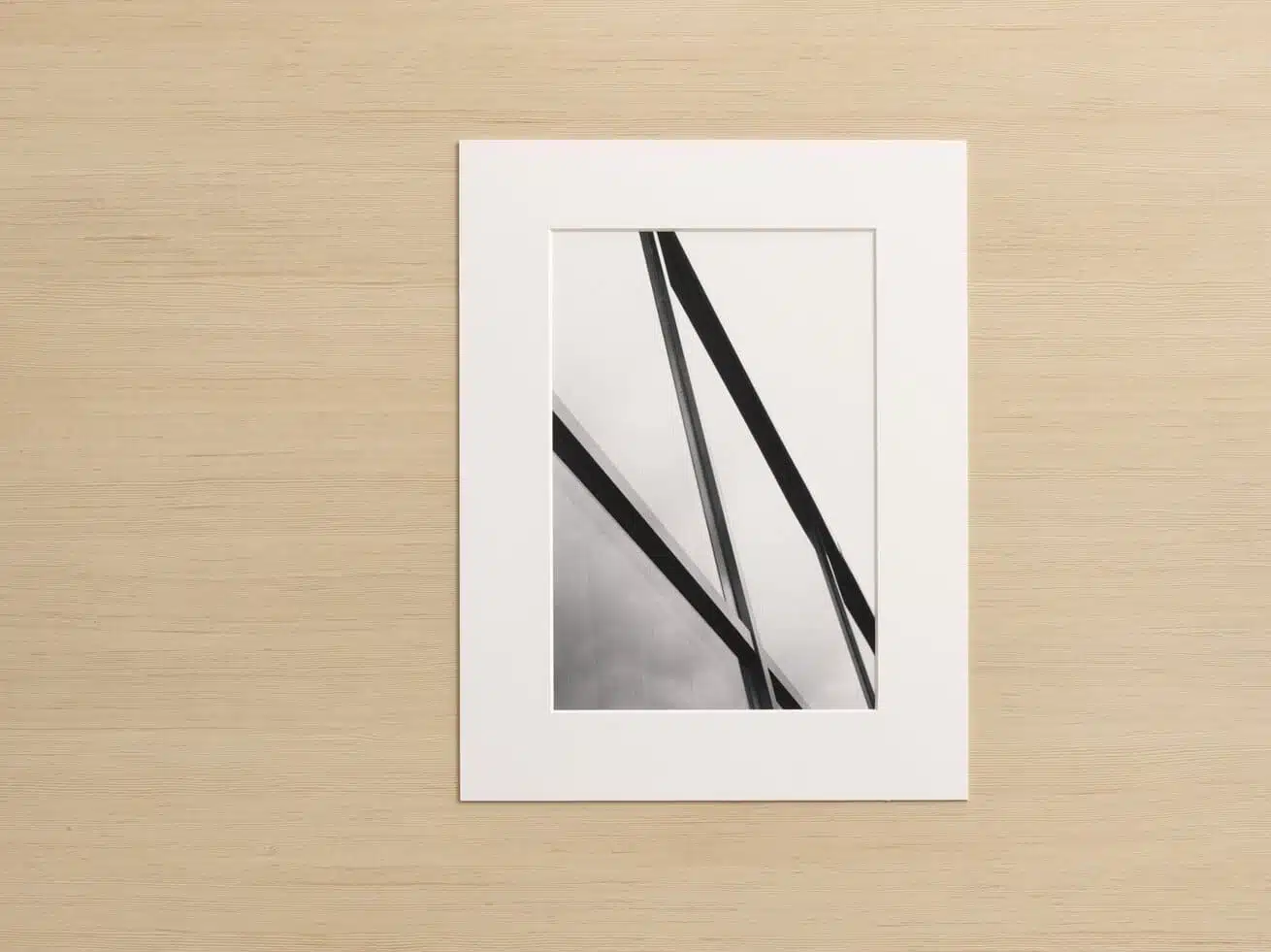Interview with Tim
Almost every day we receive questions about passepartout in picture frames. What do you need a passepartout for anyway? What size does the cutout have to be? What is the best color to choose? We talk about this with Tim, our expert for passepartout and framing.
Tim, what exactly is a passepartout?
A passepartout is museum board cut in half and placed between the picture and the glass. It's a colored border around the picture that creates additional distance from the surrounding area, drawing the eye more to the picture.
And what do you need a passepartout for?
Framing with a passepartout is one of the most classic forms of picture presentation. Three aspects are important here:
- Design: one tries to give the picture more space to the surroundings, to enhance the effect of the picture or to make small pictures look bigger.
- Conservation: With passepartout, the glass does not rest on the picture, which is enormously important with loose colors, pastels or chalk drawings, for example.
- Changing existing: This allows pictures to be adapted to standard frames, e.g. when museums work with uniform interchangeable frames.
I have decided to use a passepartout. What is the best way to design it?
One usually thinks from the picture. There are a few basic rules when designing a passepartout, and it takes a creative flair to make the passepartout fit the picture perfectly. To see what works best, our 3D configurator helps you decide what proportions or colors will fit. If you don't have a defined frame format yet, it makes it easier to calculate and determine the frame size.
This can be done in just a few steps. In the configurator, simply click on "Passepartout" or "Add cutout" and enter the required cutout. This should be 6 to 10 mm smaller than the image size. Afterwards, you can still adjust the border widths and proportions via the outer format.
How do I determine the correct border width?
In our experience, it looks most harmonious if the width of the passepartout border is about 10% of the dimension of the longer outer side. The cut-out should be 5 mm smaller than the picture all around to ensure that the picture is well covered by the passepartout.
| Outer format | Border width |
| 300 x 400 | 40 mm |
| 500 x 700 | 70 mm |
| 700 x 1000 | 100 mm |
| 1000 x 1400 | 140 mm |
Terms like optical center or golden section, what do they mean?
There are different positions of the cutout in the passepartout design. In the past, the golden section was considered a rule of thumb for the design. It is also possible to make the lower edge a few millimeters wider than the upper edge. This optical center is perceived as pleasant by the viewer and prevents the artwork from visually running away downward. However, the trend is more towards a central alignment.



But now there are also different cardboard thicknesses. Which is ideal?
We offer 1.5 mm and 3 mm thick passepartouts. The most popular is 1.5 mm. Here, the insertion depth does not have to be adjusted either. For large formats or when a special depth effect is desired, 3 mm also looks great.
My last question: how do I choose the right shade?
White tones are by far the most popular. Here one orients oneself to the paper and chooses the passepartout rather a shade darker - with very cream-colored papers also lighter, in order to create a gradual transition to the wall. Often you are right with old white. Black looks great with strong motifs in a black frame. In any case, the preview in our configurator helps here to find the most coherent color.
// The questions were asked by Julia Halbe